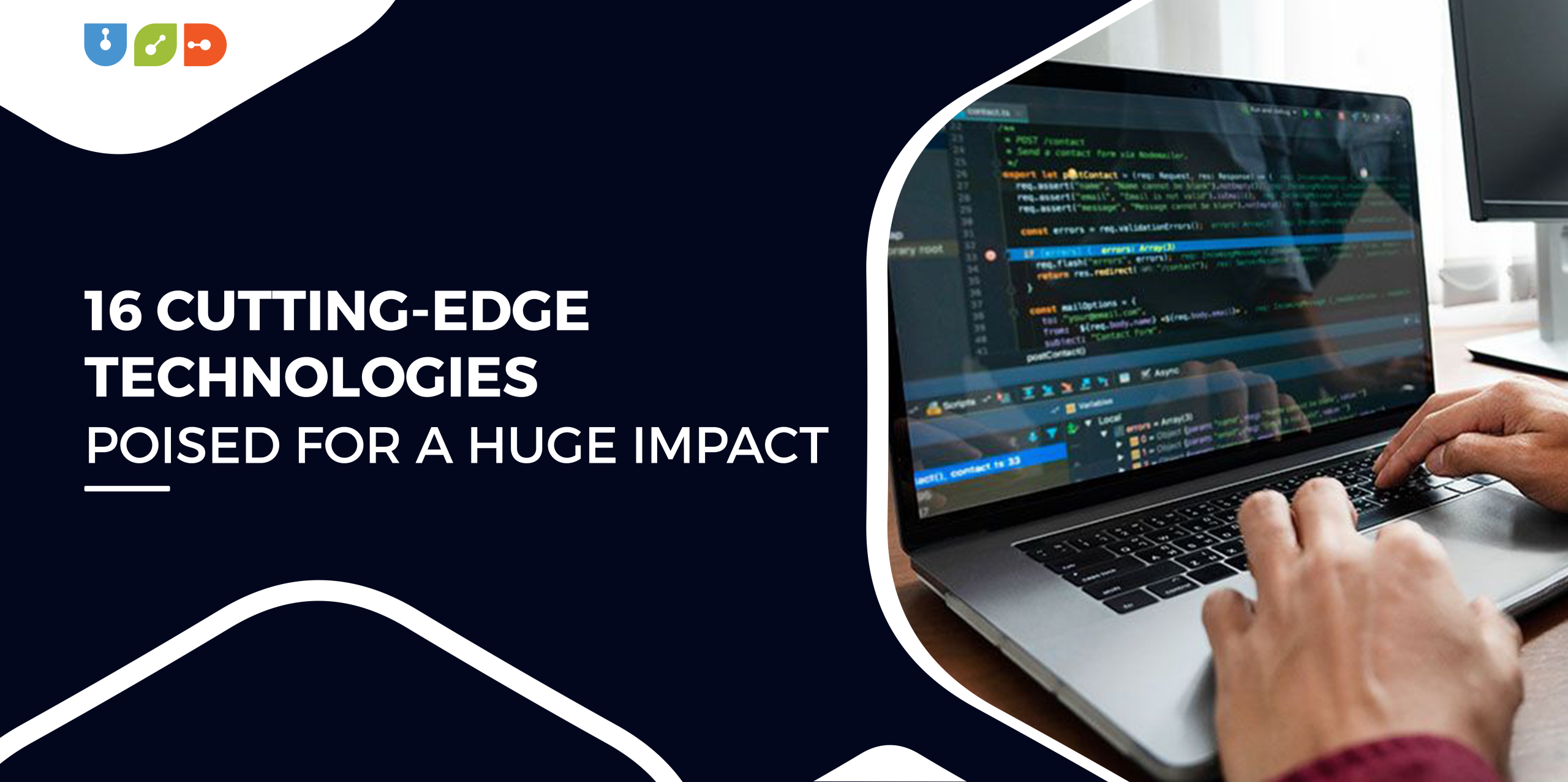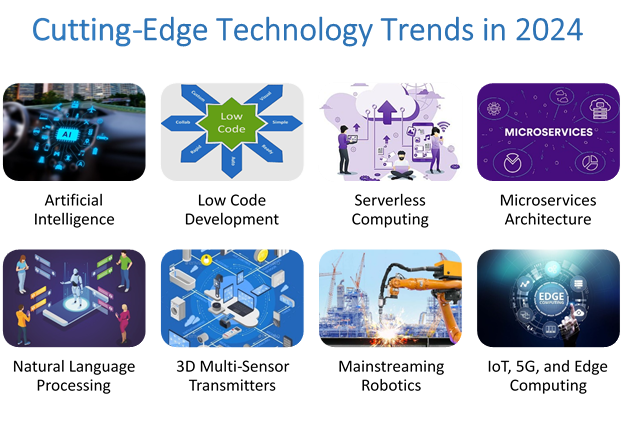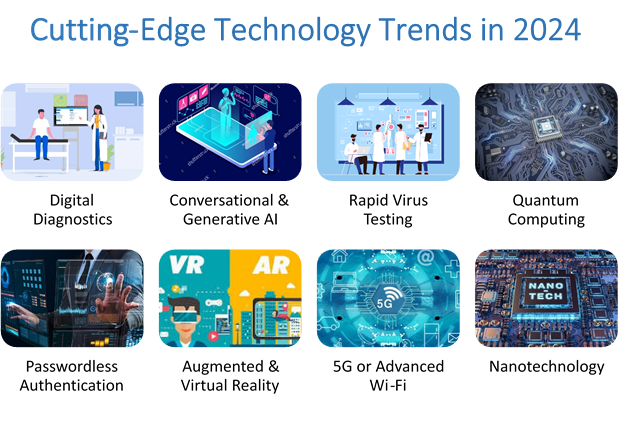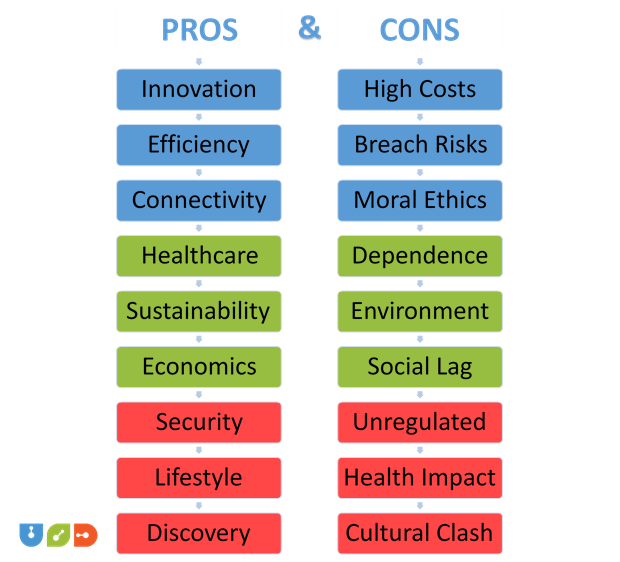Table of Contents
ToggleIt is becoming possible to make $1 Million without the need to work extensively or even go anywhere. All you need is a PC, an internet connection, and a vision of what you want to achieve. Such is the impact of advancements in computing and the latest technologies, opening numerous opportunities in diverse industries. Artificial intelligence and virtual reality have become a part of our lives, revolutionizing various business processes and devices. However, not long ago, these technologies were considered too complex and not applicable to most industries or professions.
The utilization of state-of-the-art technology in software development provides numerous advantages. It enhances performance and efficiency, offers access to innovative features, and a competitive edge in the market. However, this approach also has some drawbacks, including limited access to specialized talent capable of utilizing the latest innovations. It’s important to remember that many technological advancements face skepticism before becoming accepted.
It’s easy to forget that some of today’s seemingly unconventional developments could become tomorrow’s commonplace technologies. In this article, we will explore some of the latest tech innovations that are expected to dominate headlines in the near future. We will discuss them in detail while providing their creative use and their benefits and limitations to businesses. We will also address how experts use it to enrich software solutions.
What is a Cutting Edge Technology?
Cutting edge technology is a term used to describe the most advanced and latest tools, techniques, and platforms that are available for an industry. The term is often compared to “bleeding-edge” technology, which refers to technologies that are so new that they are not yet ready for mass adoption. It usually covers the technologies that are still in the early stages of development and isn’t fully mature. As a result, there is always a high risk of unreliability.
However, it’s important to note that cutting-edge technology is not the same as alpha or beta releases. It could be software that has already been released for the general public and business users but is awaiting vetting by users. Such type of technology is at the forefront of knowledge and is often considered game-changing as it holds immense power.
Cutting-Edge Technology Trends in 2024
The pace of technological innovation is accelerating, with software developers exploring and utilizing innovative tools. The following trends are impacting diverse industries and forging new paths that entrepreneurs and enterprises may tap into to flourish quickly.
1. Assisting Genuine Intelligence: Artificial Intelligence (AI)
AI development assists with business process automation and algorithms that can test code to identify and eliminate bugs. Moreover, AI can provide guidance, insights, perform tasks, create content, and even generate code. It significantly augments the output of professionals, enabling them to accomplish objectives efficiently and faster. Furthermore, it can analyze large sets of data and find patterns to perform predictive analysis or optimize software performance.
Creative Use – AI-powered Personalized Learning
Utilize AI algorithms to dynamically tailor educational content based on individual learning styles, preferences, and progress, enhancing the effectiveness of online learning platforms.
2. Eliminating the Technical Barriers: Low-code Development
In recent years, one of the most significant developments in software development has been the emergence of low-code solutions. These platforms enable both business users and developers to create applications much more quickly than traditional coding methods by utilizing graphical user interfaces. Even individuals without programming experience can create small yet powerful apps by simply dragging and dropping functional elements.
Creative Use – Rapid Prototyping for Creative Projects
Empower artists and designers with low-code platforms to prototype interactive installations, digital artworks, or multimedia projects quickly without extensive coding, fostering creativity in the digital art realm.
3. Surpassing the On-Premise Storage: Serverless Computing
Moving computing resources offsite and into the cloud is making code development more efficient and cost-effective. It’s because it eliminates the need to provision, manage, and scale servers, which reduces infrastructure costs and allows organizations to pay only for the resources they use. Additionally, it frees up skilled employees to focus on their code rather than dealing with hardware issues.
Creative Use – Event-Triggered Digital Art Installations
Deploy serverless computing to create interactive art installations that respond to real-time events, such as social media trends, weather changes, or audience interactions, offering dynamic and engaging experiences.
4. Breaking Silos into Manageable Chunks: Microservices
There is a recent trend to break down software solutions into smaller, interconnected services called microservices instead of building large, complex applications. By distributing application components across multiple services, microservices ensure that applications continue to function even if one component fails, which improves overall resilience.
Creative Use – Adaptive Gaming Environments
Implement microservices architecture in gaming platforms to dynamically adjust game elements based on player behavior, preferences, and skill levels, creating personalized and immersive gaming experiences.
5. Bridging the Communication Gap: Natural Language Processing (NLP)
Machine learning and AI-powered software development tools are now utilizing Natural Language Processing (NLP) more than ever. These systems aim to comprehend text input in a similar way to humans. Developers are using NLP algorithms to classify and analyze text data, which helps them extract valuable insights from large datasets. It, in turn, enables them to build applications that can respond intelligently to text inputs.
Creative Use – AI-Generated E-Book Collaborations
Harness NLP is used to facilitate collaborative book writing, where AI analyzes user inputs, emotions, and themes to co-create unique and emotionally resonant e-books for readers.
6. Revolutionizing Sensory Experiences: The Impact of 3D Multi-Sensor Transmitters
The game-changing arrival of 3D multi-sensor transmitters promises to reshape our sensory encounters. Imagine a virtual reality that not only replicates the visual aspects of an object but also mimics its texture. A sofa, for instance, can seamlessly transform from the feel of real leather to velvet or wool, thanks to the transformative capabilities of 3D multi-sensor transmitters. Beyond the realm of personal experience, these transmitters hold the potential to significantly reduce environmental footprints, marking a monumental shift in how we interact with our surroundings.
Creative Use – Interactive Art Exhibits
Integrate 3D multi-sensor transmitters in art exhibits to enable visitors to interact with and manipulate digital elements, creating an immersive and participatory experience that blurs the line between art and audience.
7. A Leap into Futuristic Industries: Mainstreaming Robotics
Robotics is poised to step into the spotlight of mainstream industries. While the buzz around robotics has been ongoing, the convergence of mature hardware and software technologies is now making it a reality. Among the early beneficiaries is agriculture, where robotics is set to revolutionize traditional practices, paving the way for increased efficiency and innovation.
Creative Use – Robotic Interactive Performances
Incorporate robotics into live performances, where robots collaboratively dance, move, or respond to audience interactions, creating futuristic and visually stunning shows that merge technology and artistry.
8. Unleashing the Synergy: IoT, 5G, and Edge Computing’s Potential
The unification of the Internet of Things (IoT), 5G, and edge computing holds untapped value for industries worldwide. Despite the initial hype, many sectors have yet to fully capitalize on these technologies due to inadequate infrastructure and data management. As these foundational issues are addressed, the depth of insights from smart devices is bound to surprise, opening new avenues for innovation and business transformation.
Creative Use – Smart Event Experiences
Implement IoT, 5G, and edge computing to enhance event experiences by providing real-time personalized recommendations, navigation assistance, and interactive elements, transforming traditional events into tech-infused spectacles.
9. Healthcare’s Digital Evolution: Digital Diagnostics
In the evolving landscape of healthcare, at-home digital diagnostics emerge as a hotbed for innovation. Telehealth’s pivotal role in expanding access to care and reducing healthcare costs is set to be complemented by advancements in real-time diagnostics. This shift promises a future where virtual healthcare excels in providing accurate and timely diagnoses, diminishing the need for in-person medical visits.
Creative Use – Virtual Health and Wellness Coaching
Develop at-home digital diagnostic tools integrated with virtual training platforms to personalize health and wellness advice and real-time diagnostics, fostering proactive healthcare practices.
10. Paving the Way for Natural Human Interaction: Conversational AI
The era of seamless human-AI conversations is on the horizon. Soon, major players like Google or Amazon will release software capable of engaging in fluent and natural conversations with users. This development is expected to trigger widespread adoption, transforming routine interactions with AI assistants like Alexa into efficient task-performing conversations, from planning vacations to following intricate recipes.
Creative Use – AI-Equipped Customer Care
Implement efficient customer care with conversational AI to engage clients in conversations, respond to their queries or requests, and provide personalized support to boost conversions.
11. Revolutionizing Pandemic Response: The Rise of Rapid Virus Testing
The spotlight on testing and contact tracing during the COVID-19 era has laid the groundwork for the evolution of rapid virus testing. Anticipate a future where compact, home-based testing devices seamlessly integrate with smartphones, offering easier and more frequent testing. When coupled with location-based contact-tracing apps, these advancements promise to enhance society’s ability to respond to and manage pandemics more effectively.
Creative Use – Smart Health Checkpoints
Utilize rapid virus testing tools at smart health checkpoints in public spaces, such as airports or event venues, to quickly screen for infections and ensure the safety of large gatherings.
12. Shaping the Future of Technology and Innovation: Quantum Computing
Quantum computing has transcended the realm of science fiction to become a significant focus of commercial and national investment. Within the next decade, large-scale gate-based quantum computers are expected to make groundbreaking contributions to fields like materials science, cybersecurity, and medicine, marking a transformative leap forward in computational capabilities.
Creative Use – Quantum-Inspired Art Generation
Explore quantum computing algorithms to generate unique and complex digital art pieces, leveraging the principles of quantum mechanics to create visually stunning and unpredictable artworks.
13. The End of an Era: Beginning of Passwordless Authentication
The age-old computer password, a vulnerability in the modern digital landscape, is on the brink of extinction. Passwordless authentication is poised for widespread adoption, representing a crucial step in aligning authentication methods with contemporary technology. This shift addresses one of the leading causes of data breaches, paving the way for more secure and user-friendly authentication practices.
Creative Use – Biometric-Protected Cryptocurrency Wallets
Implement passwordless authentication and biometric security features in cryptocurrency wallets, ensuring secure and user-friendly access to digital assets without the need for traditional passwords.
14. Creating an Immersive Experience: AR/VR’s Game-Changing Role
Artificial reality (AR) and virtual reality (VR) are set to revolutionize the real estate, retail, and construction sectors. No longer confined to 3D models and CAD, these technologies enable stakeholders to preview changes before investing in fit-outs or construction. This transformative capability promises to save costs and streamline decision-making processes in these traditionally resource-intensive industries.
Creative Use – Virtual Design and Walkthrough Studios
Employ immersive technologies for virtual design studios in real estate and construction, allowing stakeholders to explore and interact with architectural designs in a virtual environment before physical construction, streamlining decision-making processes.
15. Connecting the World Seamlessly: 5G or advanced Wi-Fi
True always-on connectivity, powered by 5G or advanced Wi-Fi, is on the horizon. Similar to the constant presence of oxygen, this connectivity will eliminate handover issues and extend to previously challenging environments like elevators, basements, tunnels, and remote corners of logistic centers. The promise of uninterrupted connectivity is set to redefine our expectations and experiences in the digital realm.
Creative Use – Multi-User Virtual Reality Experiences
Leverage always-on connectivity to enable multi-user virtual reality experiences, where users from different locations can seamlessly interact and collaborate in shared virtual spaces, fostering new forms of remote collaboration and social interaction.
16. Transforming Fiction into Reality: Nanotechnology’s Impact
Nanotechnology, once relegated to the realms of science fiction, is emerging as a game-changer. The recent spotlight on medical technologies like messenger RNA is just the beginning. From food packaging that detects pathogens to unprecedented applications, nanotechnology is poised to make significant contributions in various domains, promising a future where the ‘nano’ scale yields macro-level advancements.
Creative Use – Smart Fabrics for Interactive Fashion
Integrate nanotechnology into fabrics to create smart textiles that respond to environmental conditions or user preferences, leading to interactive and adaptable fashion pieces that blur the lines between clothing and technology.
Pros and Cons of Cutting-Edge Technologies
While cutting-edge technologies bring about remarkable advancements, addressing these cons requires careful consideration, ethical guidance, and thoughtful regulation to ensure a balanced and positive impact on society. Let’s get into each one of them in detail to get started.
Pros of Cutting-Edge Technology
The dawn of the latest advancements holds the promise of transformative benefits for individuals and societies alike. These breakthroughs usher in a new era of efficiency, connectivity, and improved quality of life. From medical marvels that redefine healthcare to smart solutions that enhance our daily experiences, the positive impacts of cutting-edge technology are diverse and far-reaching. As the boundaries of what is possible continue to expand, the following outlines the significant advantages that come with embracing the forefront of technological progress.
1. Innovation and Progress
Cutting-edge technology drives innovation and progress, pushing the boundaries of what is possible in various fields.
Example: Breakthroughs in fields like medicine, communication, and transportation continually improve our quality of life.
2. Increased Efficiency
Cutting-edge technologies often automate processes, leading to increased efficiency and productivity.
Example: Robotics in manufacturing streamlines production processes and reduces manual labor requirements.
3. Enhanced Connectivity
Advanced communication technologies foster global connectivity, enabling real-time collaboration and information exchange.
Example: High-speed internet, 5G, and satellite communication systems facilitate seamless global communication.
4. Improved Healthcare
Cutting-edge medical technologies contribute to improved diagnostics, treatments, and patient care.
Example: Advancements in telehealth, robotic surgeries, and personalized medicine enhance healthcare accessibility and outcomes.
5. Environmental Sustainability
Some cutting-edge technologies contribute to environmental sustainability and reduce ecological impact.
Example: Green technologies such as renewable energy sources and energy-efficient devices mitigate environmental damage.
6. Economic Growth
Technological advancements stimulate economic growth by creating new industries and job opportunities.
Example: The rise of the tech sector has contributed significantly to economic development in many regions.
7. Enhanced Safety and Security
Cutting-edge technologies often improve safety and security measures, both in physical and digital domains.
Example: Surveillance technologies, biometric authentication, and cybersecurity tools contribute to enhanced safety.
8. Quality of Life Improvements
Technological advancements enhance our daily lives, offering conveniences and comforts.
Example: Smart home devices, wearable technology, and personalized digital assistants improve the overall quality of life.
9. Scientific Discovery
Advanced technologies enable scientists to explore new frontiers and make groundbreaking discoveries.
Example: Particle accelerators, space exploration technologies, and advanced telescopes expand our understanding of the universe.
Cons of Cutting Edge Technology
Amidst the rapid march of emerging tech, a parallel narrative emerges regarding the challenges and considerations that demand attention. While innovation propels societies forward, it is not clear of the drawbacks. Issues of cost, societal implications, and ethical dilemmas cast a critical lens on the darker side of progress. As we navigate the complexities of emerging tech, it becomes imperative to address the potential risks that accompany it. Let’s delve into the drawbacks that warrant thoughtful reflection as we tread the path of technological evolution.
1. High Costs
Developing and implementing cutting-edge technologies can be expensive, limiting access for certain individuals or regions.
Example: The cost of research, development, and initial deployment of new technologies can be prohibitive.
2. Security Concerns
With increased connectivity comes a higher risk of cybersecurity threats and privacy breaches.
Example: Hacking, data breaches, and cyberattacks pose significant risks to individuals and organizations.
3. Ethical Dilemmas
Emerging technologies may raise ethical concerns, requiring careful consideration of their societal impact.
Example: Ethical dilemmas arise in areas such as artificial intelligence, genetic engineering, and autonomous systems.
4. Technological Dependence
Overreliance on technology can lead to dependence, making societies vulnerable to disruptions.
Example: Dependency on a centralized digital infrastructure may pose risks during natural disasters or cyber incidents.
5. Environmental Impact
Some cutting-edge technologies may have adverse environmental effects during production or disposal.
Example: The environmental impact of electronic waste from discarded devices.
6. Social Inequality
Access to cutting-edge technologies may exacerbate social inequality if not distributed equitably.
Example: Disparities in access to education and opportunities related to technology.
7. Lack of Regulation
Rapid technological advancements may outpace regulatory frameworks, leading to challenges in oversight and control.
Example: Issues related to data privacy, artificial intelligence ethics, and biotechnological developments may lack comprehensive regulation.
8. Health Concerns
Some emerging technologies may raise health concerns, and their long-term effects may not be fully understood.
Example: Potential health risks associated with prolonged exposure to certain wireless technologies.
9. Cultural Impact
Rapid technological changes can disrupt cultural norms and traditions, leading to societal tensions.
Example: The impact of social media on cultural values and interpersonal relationships.
How Unique Software Development Embeds Cutting Edge Technology in Solutions?
For successful software development, businesses must prioritize continuous learning, hands-on experience, and innovative culture. Staying up-to-date about the latest trends and best practices in the fast-paced software industry is fundamental. It involves regular and rigorous research to keep abreast of advancements. Businesses should actively learn about new tools and technologies and gauge how to apply them in real-world scenarios.
Hands-on experience further solidifies theoretical knowledge, allowing developers to navigate challenges effectively. Moreover, by incorporating the latest trends and tools into workflows, businesses can optimize efficiency and output. The combination of theoretical understanding and practical application ensures that software development projects stay flexible and adaptable. It doesn’t merely follow trends but actively contributes to shaping the future of the industry.
Unique Software Development fosters a culture that encourages innovation, exploration, and experimentation. Professional developers are empowered to push boundaries, try out novel approaches, and innovate to transform challenges into opportunities. Such a mindset not only keeps projects progressive but also sparks creativity and problem-solving ingenuity. The diverse experience of its marketers and managers allows it to cater to the user’s needs effectively.
As businesses seek game-changing solutions, Unique Software Development stays vigilant of the latest technology trends, their implications, pros, and cons. Accessing insightful guidance and services from experts allows business process automation and digital transformation. It provides functional software that optimizes performance, reduces resource consumption, and complies with the latest industry standards. Moreover, it allows companies to focus on customer care and marketing strategies for business growth and expansion.
Conclusion
A multi-faceted approach that combines continuous learning, practical application, and a culture of innovation is key to successful software development. It not only ensures that businesses stay competitive but also positions them as active contributors to the ongoing evolution of the industry. For embedding cutting edge technology in solution design, leverage the expertise of Unique Software Development. Whether you aim for AI, Blockchain, Mobile App, or Web Development, we offer it all under one roof. We add value with a strategic advantage for businesses embarking on software projects to transform business process and industries digitally.



















